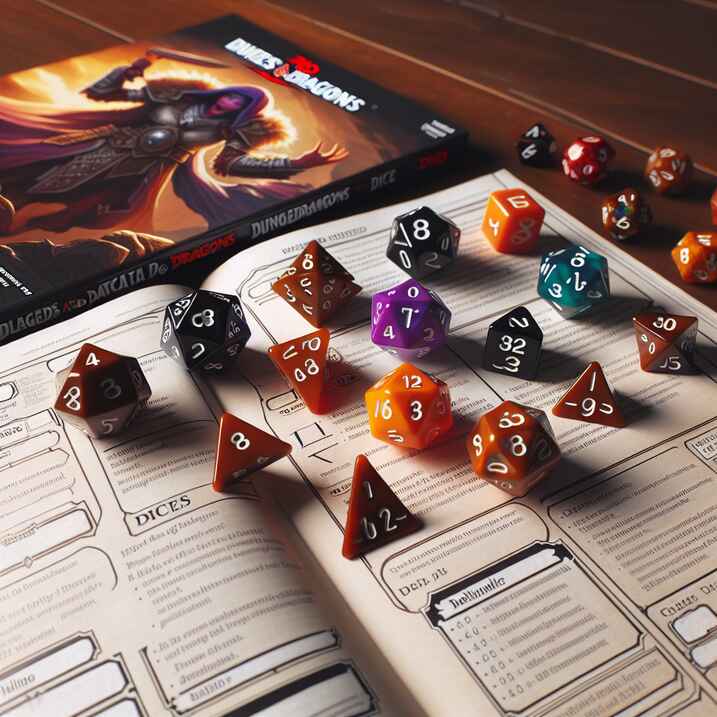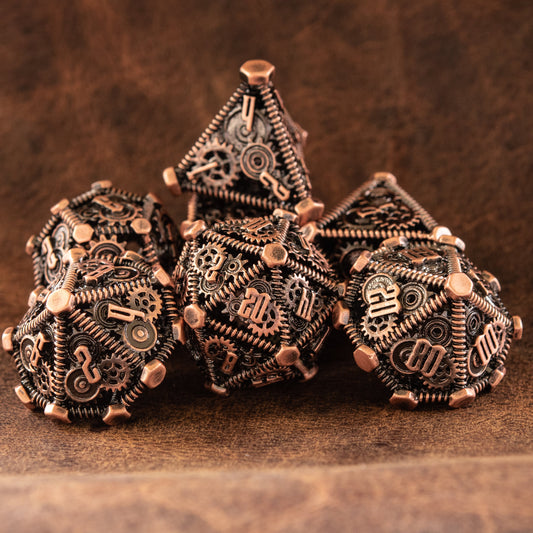
Mastering D&D Dice Rules: A Comprehensive Guide to Dice Mechanics and Usage
Share
Mastering D&D Dice Rules: A Comprehensive Guide to Dice Mechanics and Usage
Introduction
In the mystical realm of Dungeons & Dragons (D&D), where imagination dances with strategy, dice are the silent arbiters of fate. These polyhedral wonders are not mere tools; they are the heartbeat of every campaign, determining the success or failure of a hero's journey. Understanding the mechanics of D&D dice is paramount for any adventurer seeking to master the art of gameplay. From the moment you grasp a die, you hold the power to shape destinies, unravel mysteries, and conquer formidable foes. Let's delve into the fascinating world of D&D dice rules and uncover the secrets that lie within these multifaceted gems.
Types of D&D Dice
D10 (10-sided die)
- Applications: The D10 is a versatile die, often employed in damage rolls and percentile rolls. It is a staple for calculating the impact of certain spells and attacks, and when paired with another D10, it transforms into a percentile die, offering a range from 0 to 99.
D12 (12-sided die)
- Usage: The D12 is the die of choice for determining damage from powerful weapons or spells. Its rarity in rolls makes it a symbol of might, often associated with formidable barbarian strikes or the devastating force of a greataxe.
D20 (20-sided die)
- Role: The iconic D20 is the cornerstone of D&D mechanics, pivotal in attack rolls, saving throws, and skill checks. Its roll can mean the difference between triumph and disaster, with the elusive natural 20 heralding critical success and the dreaded 1 spelling critical failure.
D4 (4-sided die)
- Purpose: The D4, with its pyramid shape, is used for smaller damage rolls and specific spells. Despite its modest size, it plays a crucial role in determining the effects of minor yet strategic actions.
D6 (6-sided die)
- Prevalence: Familiar to many from traditional board games, the D6 is prevalent in damage rolls and character creation. Its simplicity belies its significance, as it often forms the backbone of spell effects and weapon damage.
D8 (8-sided die)
- Versatility: The D8 is a versatile die, frequently used for medium-strength weapons and spells. Its balanced nature makes it a reliable choice for many character classes and abilities.
Percentile Dice (d100)
- Explanation: The percentile dice, commonly represented by two D10s, is used to determine percentages. One die indicates the tens place, while the other represents the units, together providing a range from 1 to 100, essential for random events and special cases.
Understanding D&D Dice Mechanics
Critical Rolls
- Impact: Rolling a natural 20 or a natural 1 can dramatically alter the course of a game. A natural 20 often results in extraordinary outcomes, such as double damage in combat, while a natural 1 might lead to catastrophic failures, adding an element of suspense and excitement to every roll.
Dice Notation
- Explanation: D&D employs a unique dice notation system, such as 'd20' or '3d6'. The 'd' stands for 'die' or 'dice', followed by a number indicating the type of die. This notation is crucial for understanding the rules and executing various actions within the game.
Rolling for Outcomes
- Description: Dice rolls are the arbiters of success or failure in D&D. Players roll dice to meet or exceed a difficulty class (DC) set by the Dungeon Master (DM), with modifiers influencing the outcome. Whether climbing a treacherous cliff or negotiating with a stubborn guard, the roll of a die determines the path forward.
Advanced Dice Techniques
In the intricate tapestry of Dungeons & Dragons, mastering the basic dice mechanics is just the beginning. To truly excel, one must delve into advanced dice techniques, which add layers of strategy and excitement to the game.
Advantage and Disadvantage
One of the most dynamic mechanics in D&D is the concept of advantage and disadvantage. This involves rolling two D20s simultaneously. When a player has advantage, they take the higher of the two rolls, increasing their chances of success. Conversely, with disadvantage, the lower result is used, reflecting a higher likelihood of failure. This mechanic is crucial in simulating varying circumstances, from the favorable conditions of a well-planned ambush to the hindrances of a treacherous terrain.
Rerolling and Extra Dice
Certain abilities and traits allow for rerolls or the addition of extra dice, injecting unpredictability into the gameplay. For instance, the halfling's luck ability permits a reroll of a natural 1, turning potential disaster into opportunity. Similarly, critical hits often grant the chance to roll additional damage dice, amplifying the impact of a successful attack and keeping players on the edge of their seats.
Using Percentile Dice
Percentile dice, or d100, are employed for special cases and random events, adding a layer of chance that can dramatically alter the game's narrative. By rolling two D10s, players can determine probabilities, such as the likelihood of finding a rare item or the outcome of a chaotic magic surge. This method enhances the unpredictability and excitement of D&D, ensuring no two sessions are ever the same.
Using D&D Dice in Gameplay
To wield the power of D&D dice effectively, players must integrate these mechanics seamlessly into their gameplay.
Communicating with Your DM
Clear communication with the Dungeon Master (DM) is vital. Discussing dice rolls and modifiers ensures transparency and fairness, fostering a collaborative storytelling environment. This dialogue can enhance the narrative, as players and DMs work together to create memorable moments.
Embracing the Element of Chance
The unpredictability of dice rolls is a fundamental part of the D&D experience. Embrace this element of chance as it adds tension and excitement to every decision and action. Whether facing a formidable dragon or negotiating with a cunning merchant, the roll of the dice can lead to unexpected outcomes, enriching the storytelling.
Familiarizing with Dice Notation
Understanding and practicing dice notation is essential for effective gameplay. Familiarity with terms like '3d6' or 'd20+5' allows players to quickly interpret and execute actions, keeping the game flowing smoothly. Regular practice with different dice combinations can enhance a player's confidence and proficiency.
Keeping Dice Organized
An organized dice set is crucial for efficient gameplay. Consider using a dice tray to prevent them from rolling off the table and to keep them contained. This not only saves time but also maintains the focus on the game, minimizing disruptions.
Practicing Rolling Techniques
Consistent and fair dice rolling techniques are vital. Avoid flicking or dropping dice in a manner that might affect the outcome. Instead, develop a steady rolling method that ensures randomness, maintaining the integrity of the game.
Mastering the art of D&D dice rules is a journey filled with discovery and excitement. By understanding advanced techniques, fostering communication, and embracing the element of chance, players can elevate their gameplay experience. These insights empower adventurers to shape their destinies with every roll, leading to epic tales and unforgettable campaigns. So, gather your dice, rally your party, and embark on adventures where the roll of a die can change everything. Let the games begin!


